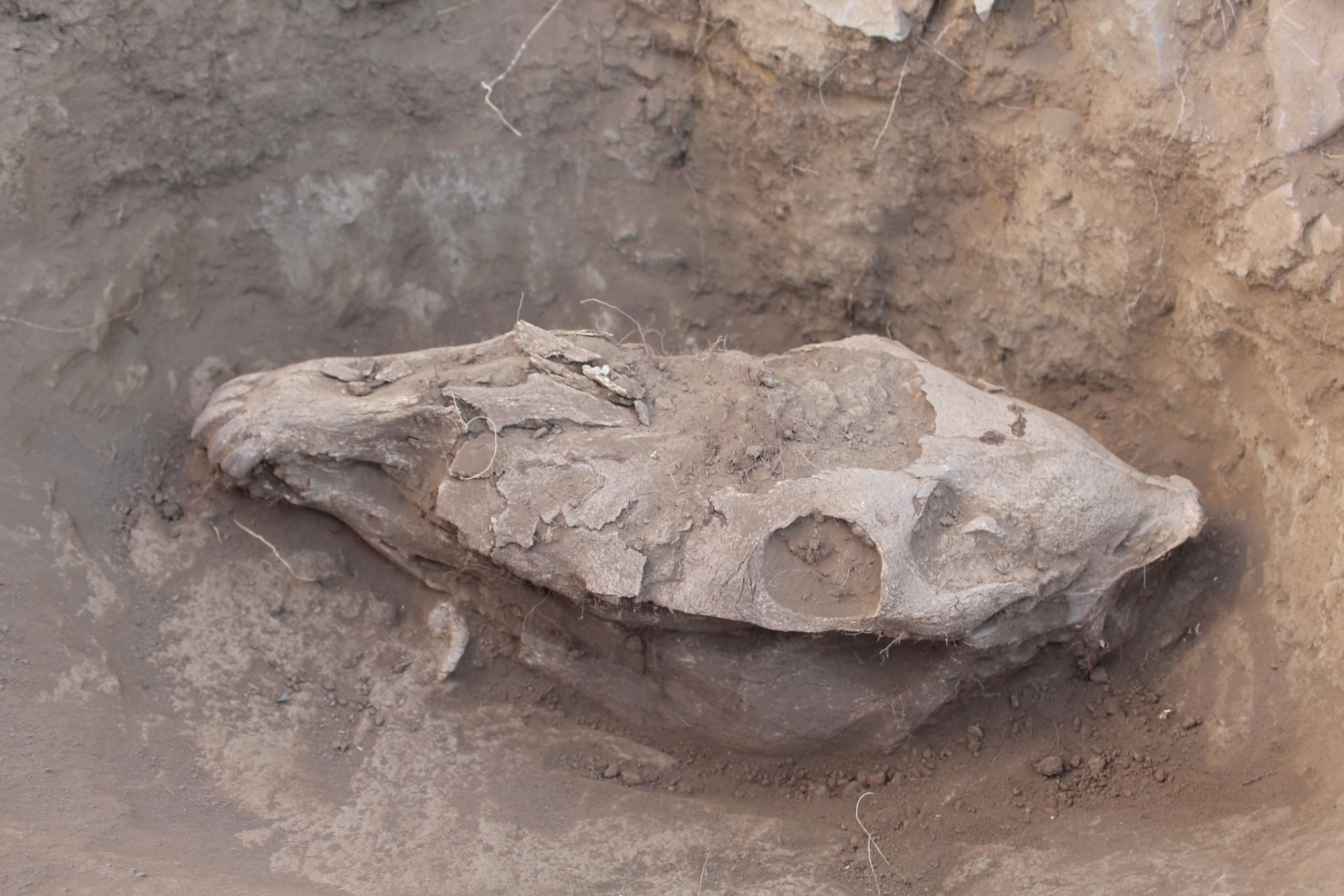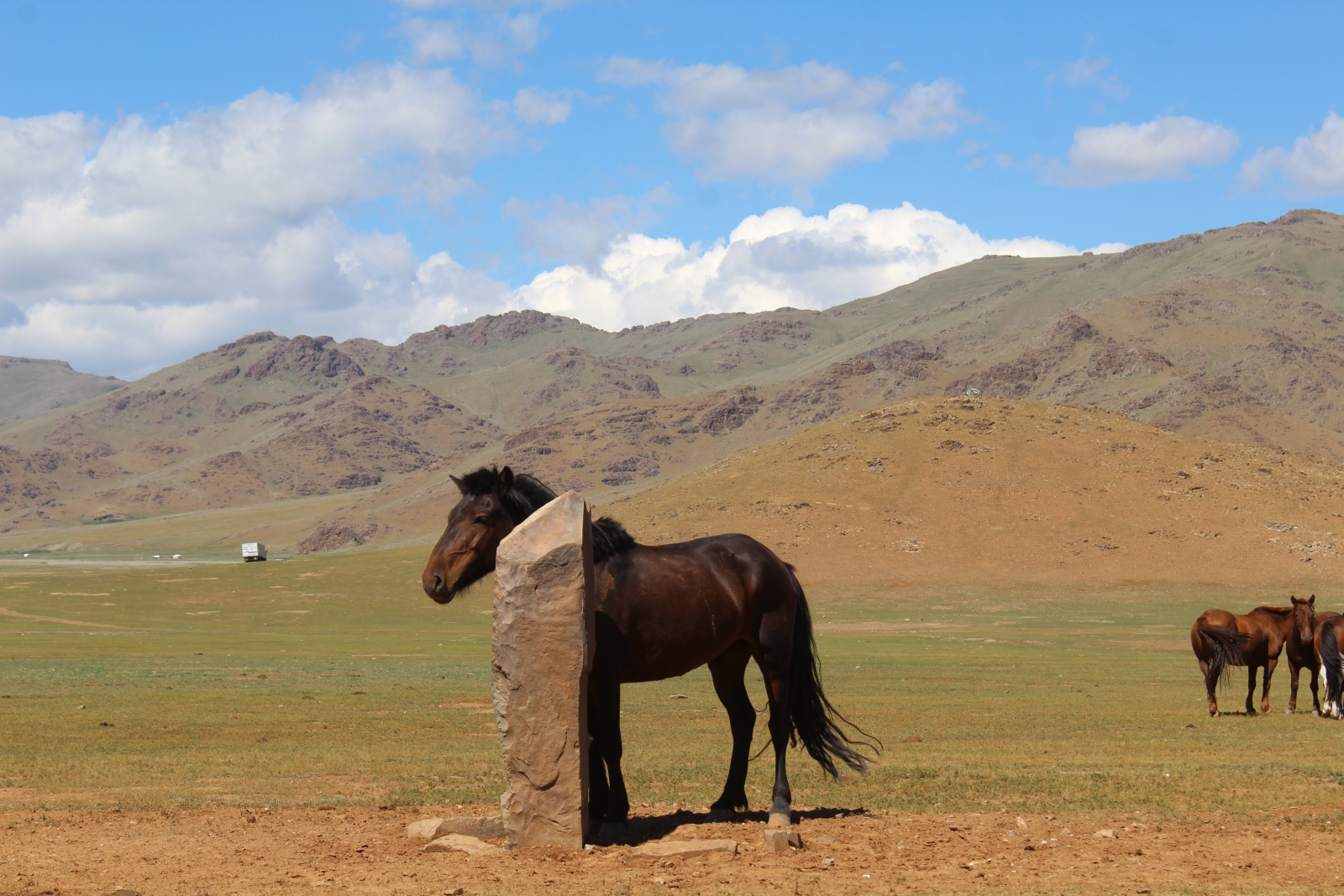The 3,200-year-old mounds showed horses were buried individually nearby
human graves.

The first evidence of sophisticated horseback riding in Mongolia has been dated to the Bronze Age in 1200 BCE by analysis of horse remains in burial mounds. The discovery pushes back the date for this cultural development centuries earlier than historical sources suggest.
Genghis Khan and the Mongol hordes were incredibly skilled horseback riders. Their fearsome mounted armies conquered much of the Eurasian steppe. But sophisticated horse-riding had been present in the area about 2,000 years before Khan's reign, according to a study published in the Journal of Archaeological Science.
The first historical records of skilled horseback riding in Mongolia were around 800 BCE, when images of mounted warriors first start to be seen in historical documents. However, the first domestication of horses came much earlier, at around 3500 BCE. Study author William Taylor of of the Max Planck Institute for the Science of Human History in Germany argues that the critical emergence of horses as a central part of life on the Eurasian steppe began earlier than this.
"This is the development of sophisticated horseback riding rather than simply using horses to pull carts or chariots," Taylor told IBTimes UK.
Radiocarbon dating of the horse bones found in the sacred Bronze Age burial mounds, where horses were buried in the vicinity of humans, shows that these animals began to receive ritual burials around 1200 BCE.
"The burial sites often consist of central monument – a stone burial mound or a beautiful standing stone called a deer stone, and around the eastern perimeter are all of these individual horse burial mounds," Taylor said. "They contain the head and the hooves and sometimes the upper neck bones."

The horses each received individual burial mounds outside the main perimeter of the burial site, typically towards the east, said Taylor.
"This really suggests a change in people's relationship to horses. We can't say exactly what that change was, whether it was perhaps the first introduction of horses into eastern Eurasia or whether this was simply a change in ritual. But there's a lot of evidence that this major change was related to the development of horseback riding."


No comments:
Post a Comment